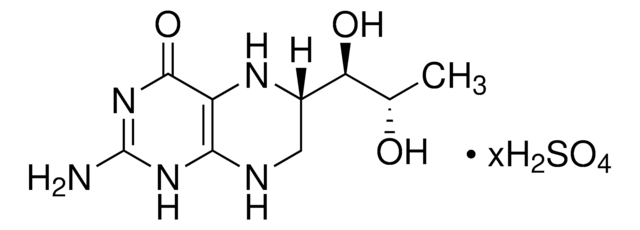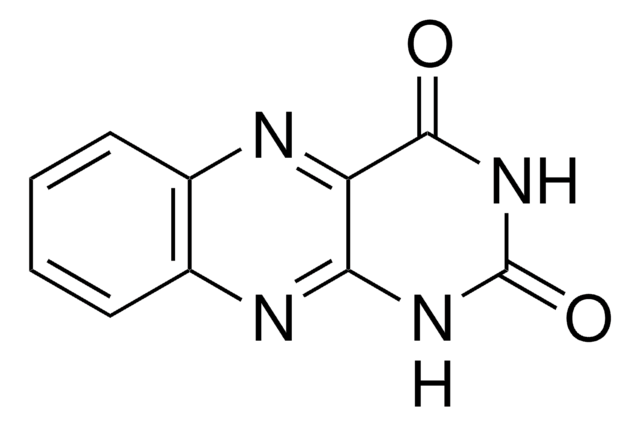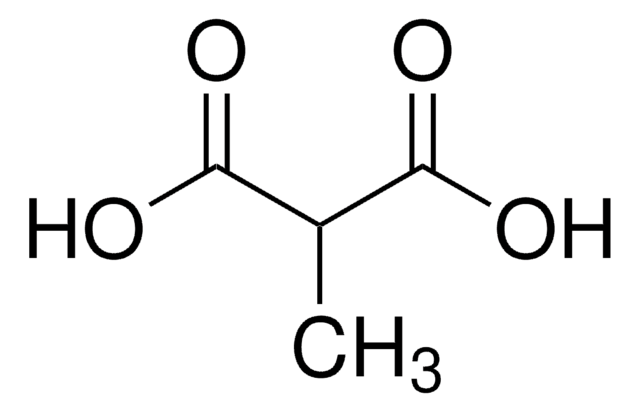P1132
Pterine
~95%
Synonym(s):
2-Amino-4-hydroxypteridine, 2-Amino-4-oxodihydropteridine
Sign Into View Organizational & Contract Pricing
All Photos(1)
About This Item
Empirical Formula (Hill Notation):
C6H5N5O
CAS Number:
Molecular Weight:
163.14
Beilstein/REAXYS Number:
150294
EC Number:
MDL number:
UNSPSC Code:
12352202
PubChem Substance ID:
NACRES:
NA.77
Recommended Products
biological source
synthetic
Quality Level
assay
~95%
form
powder
storage temp.
2-8°C
SMILES string
Nc1nc(O)c2nccnc2n1
InChI
1S/C6H5N5O/c7-6-10-4-3(5(12)11-6)8-1-2-9-4/h1-2H,(H3,7,9,10,11,12)
InChI key
HNXQXTQTPAJEJL-UHFFFAOYSA-N
Looking for similar products? Visit Product Comparison Guide
Application
Pterine has been used:
- in photochemicals assay for inducing DNA damage
- as a substrate in xanthine oxidase assay
- as a standard in thin layer chromatography (TLC) for quantifying pterine from microbes
Biochem/physiol Actions
Pterine consists of pyrazine and pyrimidine with substitutions in keto and amino group. Pterine is present in all organisms including cyanobacteria. It acts as a cofactor for redox enzymes and serves as a precursor for folic acid synthesis. Pterine from the butterfly wings absorb light and elicit incoherent scattering. Pterine induces alterations in DNA by hydroxylation of deoxyguanosine.
signalword
Warning
hcodes
Hazard Classifications
Eye Irrit. 2 - Skin Irrit. 2 - STOT SE 3
target_organs
Respiratory system
Storage Class
11 - Combustible Solids
wgk_germany
WGK 3
flash_point_f
Not applicable
flash_point_c
Not applicable
ppe
dust mask type N95 (US), Eyeshields, Gloves
Choose from one of the most recent versions:
Already Own This Product?
Find documentation for the products that you have recently purchased in the Document Library.
Customers Also Viewed
Pterin function in bacteria
Feirer N and Fuqua C
Pteridines, 18(1), 23-36 (2017)
Andrea Sariego-Jamardo et al.
Pediatric neurology, 53(5), 422-426 (2015-10-18)
The mechanisms of the ketogenic diet remain unclear, but several predictors of response have been proposed. We aimed is to study the relationship between the etiology of epilepsy, cerebrospinal fluid neurotransmitters, pterins, and amino acids, and response to a ketogenic
Evaluation of Pterin, a Promising Drug Candidate from Cyanide Degrading Bacteria
Mahendran R, et al.
Current Microbiology, 75(6), 684-693 (2018)
Photoinduced cleavage of plasmid DNA in the presence of pterin
Lorente C, et al.
Pteridines, 11(3), 100-105 (2000)
Colors and pterin pigmentation of pierid butterfly wings
Wijnen B, et al.
Journal of Insect Physiology, 53(12), 1206-1217 (2007)
Our team of scientists has experience in all areas of research including Life Science, Material Science, Chemical Synthesis, Chromatography, Analytical and many others.
Contact Technical Service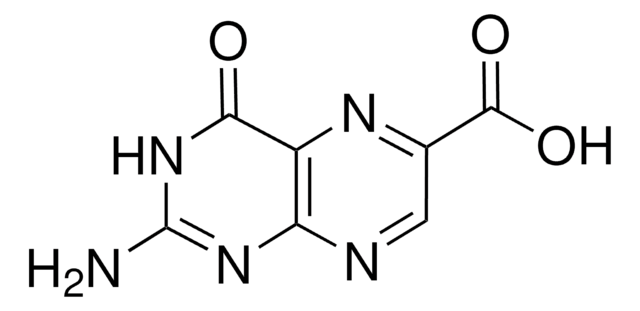
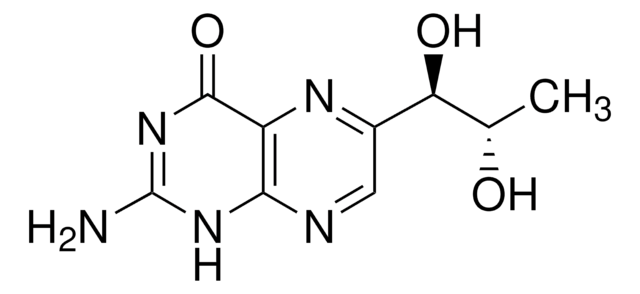

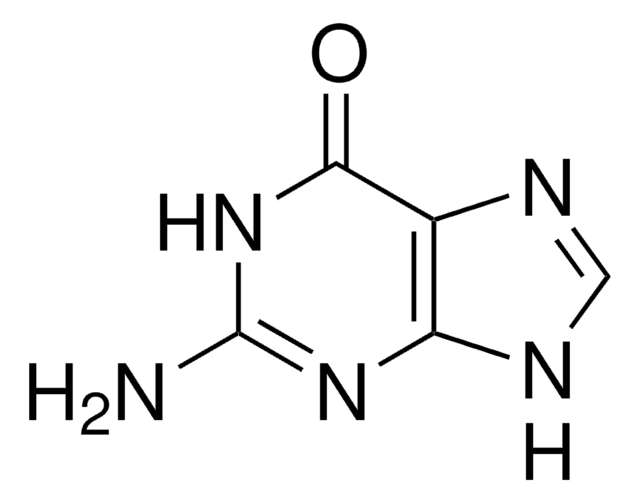


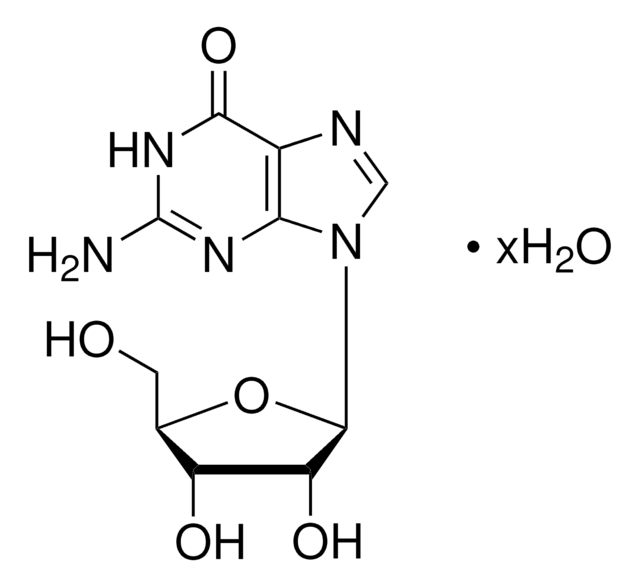
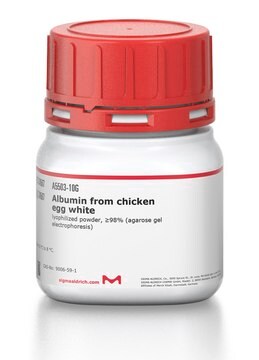
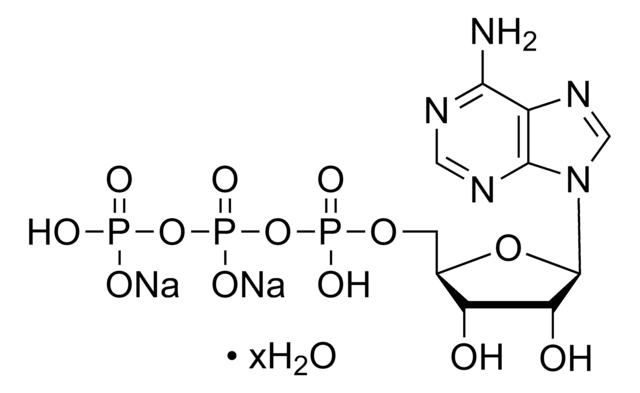
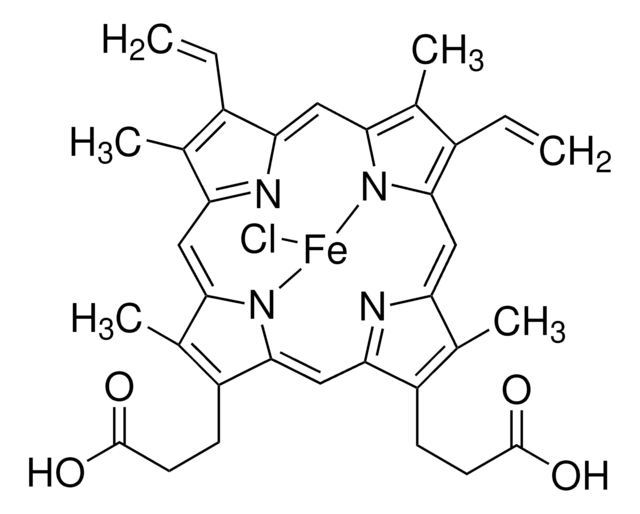

![4-(N-[2,4-Diamino-6-pteridinylmethyl]amino)benzoic acid sodium salt ≥95% (TLC)](/deepweb/assets/sigmaaldrich/product/structures/855/619/06a9574b-3e45-48aa-85c1-2f25917fa5a7/640/06a9574b-3e45-48aa-85c1-2f25917fa5a7.png)
